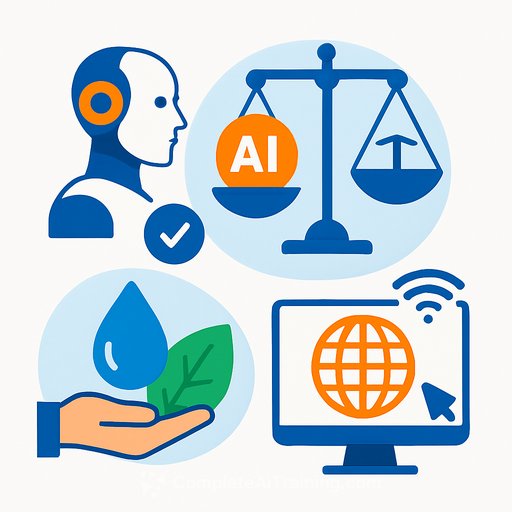Business predictions 2026: AI will become a bigger part of manufacturing operations
2026 is the year AI moves from pilots to the core of operations. Expect tighter system connections, cleaner data, and faster configuration-from quote to factory floor.
Insights from leaders at Configit point to seven shifts Operations teams can put to work right now. Here's what's coming and how to prepare.
1) AI moves deeper into configuration and design
AI will sit between PLM and ERP/Sales to reduce silos and speed up product decisions. Configuration will get more predictive, using market signals and feasibility rules to suggest what to sell and what you can build-without rework.
- Connect PLM, ERP, and CPQ so configuration data flows in real time.
- Use AI to suggest valid options based on demand, lead times, and constraints.
- Set guardrails so proposals never exceed capacity or violate rules.
2) The race to capture institutional knowledge
An aging workforce makes tacit knowledge a risk. Expect a push to digitize configuration and engineering know-how so new teams can ship with confidence.
- Inventory tribal knowledge: specs, rulebooks, emails, legacy docs, and SME notes.
- Use AI to extract rules from text and diagrams, then validate with experts.
- Stand up searchable knowledge bases tied to product models and BOMs.
3) Cross-divisional alignment to meet higher customer expectations
Customers want more personalization and shorter lead times. That demands a single source of truth that links engineering intent with what Sales offers and what Manufacturing can actually deliver.
- Define PLM as the master for product rules; sync ERP/Sales against it.
- Lock in one catalog of sellable configurations, versioned and auditable.
- Track quote accuracy, change latency, and first-pass yield as shared KPIs.
4) Data interoperability becomes a competitive advantage
Scaling AI depends on systems that speak the same language across the product lifecycle. Companies that standardize interfaces and contracts will move faster and make fewer mistakes.
- Adopt data contracts and standard schemas across PLM, MES, ERP, and CPQ.
- Prefer APIs and event streams over file drops and manual reconciliations.
- Use MDM for identifiers (parts, variants, customers) across systems.
For background on digital thread concepts in manufacturing, see NIST's work on Smart Manufacturing.
5) Reliable data foundations become the edge
Many discrete manufacturers will find fragmented, unsynchronized data that causes errors and delays. The fix: connected systems, connected data, and connected logic-before layering in bigger AI ambitions.
- Run a data audit: where truth lives, where it's duplicated, where it's stale.
- Define canonical models for parts, rules, pricing, and routings.
- Instrument data quality (freshness, lineage, completeness) with alerts.
- Create a governance cadence with Ops, IT, and Product at the same table.
6) Configuration gets redefined by AI
Two areas will change fast: model building and the configuration experience. AI can convert unstructured docs into product models and rules, reducing the time experts spend writing them by hand.
- Pilot "doc-to-rules" extraction with a narrow product family; validate against real orders.
- Offer natural-language configuration so users describe what they need and get a valid build.
- Plan for agent workflows that check sub-supplier options and availability automatically.
7) A new era of efficiency for discrete manufacturing
Expect faster translation of market insights into refined product offerings, cleaner BOM management, and quicker validation of configuration models. Many firms will shift more work from ETO to CTO, cutting manual steps and lead time.
- Map your ETO-to-CTO opportunities and set gates for where engineering must engage.
- Automate BOM generation from configuration rules and sync changes back to PLM.
- Create a closed loop: win/loss data and returns feed rule updates and pricing.
Quick primer on CTO for your team: Configure-to-Order (CTO).
Your Q1 2026 Ops plan
- Week 1-4: Data foundation sprint-pick one product line, map sources, define canonical IDs, close two highest-risk sync gaps.
- Week 5-8: PLM↔ERP↔CPQ integration-establish bidirectional updates for rules and pricing, add data contracts.
- Week 9-12: Knowledge capture-extract rules from top 10 configuration docs; validate with SMEs; publish to a shared library.
- Parallel: Pilot AI-assisted configuration UI for internal users; measure cycle time, error rate, and quote accuracy.
What this means for Operations
This year rewards teams that make clean data and connected systems the default. Get the fundamentals right and AI will help you cut decision time, reduce rework, and quote what you can build-every time.
If your team needs structured upskilling for these initiatives, explore role-based options here: Complete AI Training: Courses by job.
Your membership also unlocks:






